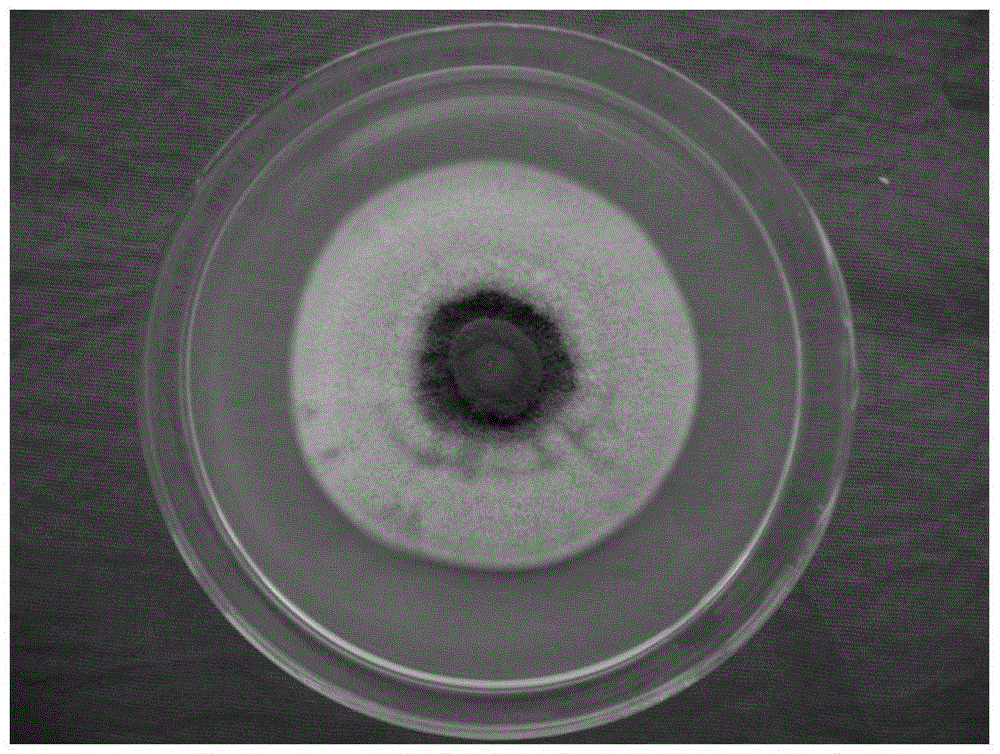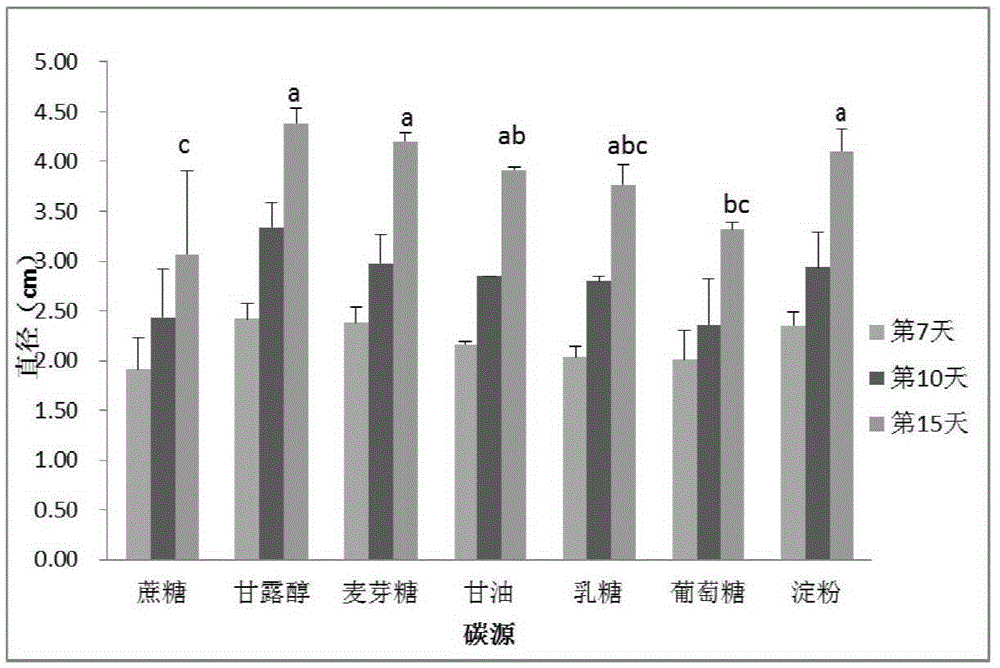Cladosporium cladosporioides and application thereof
A technology of Cladosporium cladosporium and strains, applied in the application, fungi, pesticides and other directions, can solve the problems of increasing pesticide residues, polluting the environment, endangering human health and life, etc. Rapid growth and good production traits
- Summary
- Abstract
- Description
- Claims
- Application Information
AI Technical Summary
Problems solved by technology
Method used
Image
Examples
Embodiment 1
[0026] The isolation of embodiment 1 bacterial strain
[0027] Disinfect the body surface of the collected naturally infected Panonychus citrus with 70% alcohol, put it in a 25°C incubator for 3 to 5 days, and make fresh spores grow on the surface of the insect; under sterile conditions, Use an inoculation loop to pick a small amount of fresh spores and streak them on a PDA medium plate containing 100 μg / ml ampicillin; turn the streaked culture dish over and place it in a 25°C incubator for cultivation; pick out the grown spores after 3 to 4 days For typical colonies without miscellaneous bacteria, use an inoculation needle to pick up a small piece of culture medium with hyphae at the edge of the colony, transfer it to the center of the culture medium on the slant of the test tube, and culture at a constant temperature of 25°C for 7 days.
Embodiment 2
[0028] The identification of embodiment 2 bacterial strains
[0029] (1), morphological identification
[0030] The isolated CQBBW3 strain was inoculated on a PDA plate and cultured at 25°C to observe the morphological characteristics of the colony. The results showed that the colony of the CQBBW3 strain growing on the PDA plate was round and raised, grayish white, with a yellow outer ring; the hyphae had separation and branching ; Spores are oval, single cell, colorless. see figure 1 , 2 .
[0031] (2), ITS sequence amplification, sequence determination and molecular identification of CQBBW3 strain
[0032] Using ITS1 and ITS4 as primers (see Table 1), a sequence of about 600 bp was amplified from the genomic DNA of the strain, and the sequence obtained after the PCR product was sequenced was compared with the existing nucleic acid sequence in GenBank by Blast. The results showed that, The rDNA-ITS sequence sequencing result of the strain is shown in SEQ ID No. 1, and th...
Embodiment 3
[0035] Determination of the insecticidal activity of embodiment 3 CQBBW3 bacterial strains to citrus Panonychus
[0036] Scrape the CQBBW3 mycelium grown on the PDA plate for 7 days and dissolve it in 0.02% Tween sterile water, shake and filter to collect the spore suspension, and configure 6 spore concentration gradients: 1.7×10 3 pcs / mL, 1.7×10 4 pcs / mL, 1.7×10 5 pcs / mL, 1.7×10 6 pcs / mL, 1.7×10 7 pcs / mL, 1.7×10 8 Individuals / mL; 10mL of each concentration of spore suspension was evenly sprayed on 5 leaves, and 50 heads of Panonychus citrus were connected on each leaf. The control group was sprayed with 10mL sterile water containing 0.02% Tween-80, and the deaths were counted every day Rate. See Tables 2 and 3 for the results of the insecticidal activity of the CQBBW3 strain against Panonychus citrus. LC of Cladosporium cladodes against Panonychus citrus 50 4.66×10 8 spores / mL, LT 50 It is 6.2353 days.
[0037] Table 2 Regression equation of toxicity of CQBBW3 strai...
PUM
| Property | Measurement | Unit |
|---|---|---|
| diameter | aaaaa | aaaaa |
| diameter | aaaaa | aaaaa |
| diameter | aaaaa | aaaaa |
Abstract
Description
Claims
Application Information
 Login to View More
Login to View More - R&D
- Intellectual Property
- Life Sciences
- Materials
- Tech Scout
- Unparalleled Data Quality
- Higher Quality Content
- 60% Fewer Hallucinations
Browse by: Latest US Patents, China's latest patents, Technical Efficacy Thesaurus, Application Domain, Technology Topic, Popular Technical Reports.
© 2025 PatSnap. All rights reserved.Legal|Privacy policy|Modern Slavery Act Transparency Statement|Sitemap|About US| Contact US: help@patsnap.com



